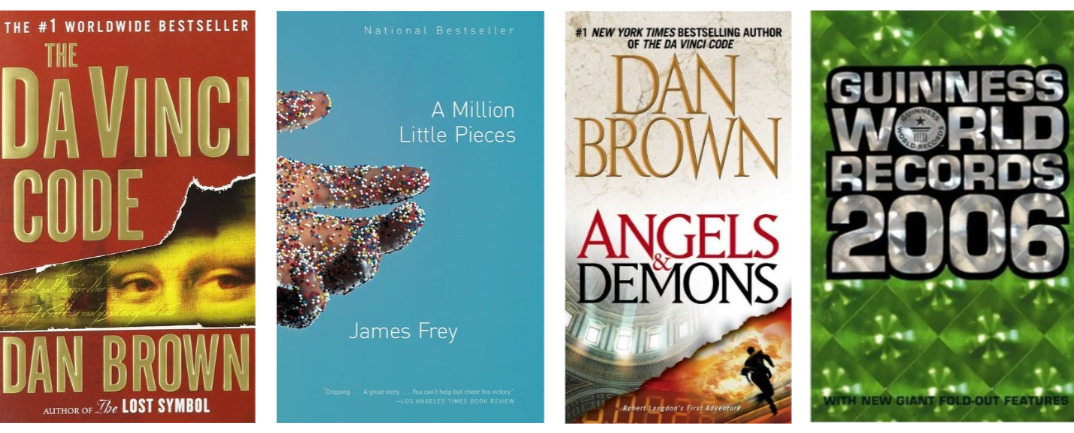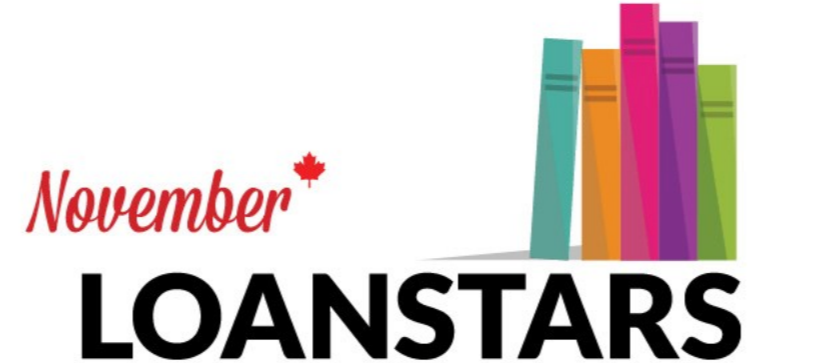Our latest study, Turning Pages: Print Book Use in Canada 2023 is now available! And in this blog series, we’re breaking down the study’s key insights.
In this first instalment, we’re taking a look at how Canadians buy print books. How are they discovering, selecting, and buying hardcovers and paperbacks?
About the data
Turning Pages: Print Book Use in Canada 2023 incorporates published data from our annual publications the Canadian Book Consumer Study 2023 and Canadian Leisure and Reading Study 2023 as well as unreleased data from those consumer surveys.
The Canadian Book Consumer Study 2023 includes results from quarterly surveys of Canadian book consumers about their book acquisition behaviour during March, June, September, and December 2023. For Turning Pages, 1,508 Canadians surveyed were considered print book buyers and 812 Canadians were considered print book borrowers, having bought a print book or borrowed a print book from the library in 2023.
The Canadian Leisure & Reading Study 2023 presents data from a survey of Canadians fielded in January 2024. The survey queried Canadians about how they spent their leisure time in 2023, with a focus on reading. For Turning Pages, 923 Canadians surveyed were identified as print book readers, having read at least one print book in 2023.
If you’re interested in the numbers behind the graphs below, you can find our source data here.
Buying print books
In the Canadian Book Consumer Study 2023, we found that 73% of Canadian book buyers bought at least one print book in 2023. Print books made up 84% of all book purchases made by these book buyers — 27% were hardcover books and 56% were paperback books. Print book buyers also purchased some ebooks and audiobooks, at 10% and 3% of all purchases respectively.
Compared to all purchases made by all Canadian book buyers in 2023, 79% were print books, 14% ebooks, and 4% audiobooks. Year over year, purchasing print books has fluctuated slightly — from 73% of all purchases in 2019, 70% in 2020, 69% in 2021, and returning to 73% in 2022.
Print book prices are increasing
The majority of print book buyers spent between $1 and $49 on print books in a given month in 2023 (59%), while others spent $50-$99 (21%), $100-$149 (8%), or more.
In 2023, many print book buyers paid full price for the print books they purchased — 67% of paperback purchases were made at full price, as well as 61% of hardcover purchases. These percentages have increased over the last five years, up from 59% of paperbacks and 56% of hardcovers bought at full price in 2019. These percentages are also higher than all Canadian book buyers — 57% of all Canadian book buyers in 2023 paid full price for their books. The percentage of print books purchased on sale or discounted in 2023 was also lower than previous years — 22% of paperbacks and 28% of hardcovers in 2023, compared to 28% of paperbacks and 32% of hardcovers in 2019. For all Canadian book buyers in 2023, 24% purchased books on sale or discounted.
Print book buyers spent an average of $17.72 for paperbacks and $24.04 for hardcovers in 2024. This number has also increased over the last five years, up from an average of $15.31 for paperbacks and $21.15 for hardcovers in 2019. The graph below shows this increase, up 16% for paperbacks and 14% for hardcovers over this time period.
Despite growing prices in 2023, print book buyers continue to rate their value for money at the price they paid for print books relatively highly, with the value of the majority of purchases rated at excellent (49% paperback, 42% hardcover) or good (37% paperback, 44% hardcover). For both paperback and hardcover purchases, 12% were rated as fair in 2023 and a further 2% of purchases were rated as poor. For paperbacks only, 1% reported value for money for their paperback purchase as bad. Compared to all Canadian book buyers in 2023, 49% reported that they received excellent value for money from their book purchase, with 38% reporting good value, 12% reporting fair value, and 1% reporting poor value.
Print book buyers are purchasing books in person
Print book buyers made more purchases in-person than online in 2023 — 54% of paperback purchases and 52% of hardcover purchases were in-person, while 46% of paperback purchases and 48% of hardcover purchases were online. Taken together, that’s 53% in-person purchases and 47% online purchases. This percentage has fluctuated considerably over the last five years, due in large part to the impact of COVID-19, shown in the graph below. These numbers are also different compared to all books purchased in 2023 — 57% of book purchases were online and 43% were in-person.
In 2023, the most popular reasons why Canadian print book buyers purchased their books at a specific location were:
convenient place to shop — 33%;
book(s) in stock/available immediately — 32%;
good price/offer/promo — 29%;
good selection of books — 23%; and
easy checkout process to buy books — 20%.
Canadian print book buyers became aware of the print books they purchased in 2023 by reading another book by the same author (21%), recommendations or reviews (20%), browsing or searching online or in person (18%), social media (12%), and bestseller lists (10%).
Most Canadian print book buyers shopping in-person in 2023 found the print book they purchased on the book’s main shelf (53%) or on a display table (14%). For Canadian print book buyers shopping online, the majority of buyers first saw the book by having searched for the particular book they purchased (46%), browsing genre/subject area (13%), or browsing books by author/illustrator (11%).
Increasingly, Canadian print book buyers purchased print books in 2023 due to their interest in the book’s subject, at 33% overall — 32% of paperback purchases and 37% of hardcover purchases. In total this percentage is up from 26% in 2019.
Similar to all Canadian book purchases in 2023, most print book purchases in 2023 were planned. Canadian book buyers:
planned ahead to buy this particular book at that specific time — 38% of print book buyers vs. 38% of all book buyers;
planned to buy this particular book, but not necessarily at that specific time — 27% of print book buyers vs. 22% of all book buyers;
were not planning to buy a book at that specific time; it was an impulse purchase — 17% of print book buyers vs. 18% of all book buyers; and
were planning to buy a book at that specific time, but had not planned to buy this particular book — 16% of print book buyers vs. 18% of all book buyers.
More than all Canadian book buyers, the top reasons print book buyers bought, rather than borrowed print books in 2023 were:
to be able to reread it whenever they want, as much as they want — 18% of print book buyers vs. 15% of all buyers;
to have it right away — 17% of print book buyers vs. 15% of all book buyers; and
to own it for their display, collection, or archive — 17% of print book buyers vs. 13% of all book buyers.
While most print book buyers purchased print books for themselves in 2023 (84%), 16% purchased print books for someone else — 14% as a gift and 2% not as a gift. Most print books purchased for others were purchased for an adult ages 18+ (51%). However, looking more closely at the division between paperback and hardcover purchases in 2023 reveals that hardcover books are a more commonly purchased for readers ages 0-12 (43%), while paperback books are more commonly purchased for readers ages 8-17 (38%).
As book consumers, print book buyers were slightly more likely than all Canadian book buyers in 2023 to agree or sometimes agree with the statements:
I prefer to pay for a bundle of content more so than buying one single item — 72% of print book buyers vs. 70% of all buyers.
The environmental impact of the book industry matters to me — 68% of print book buyers vs. 66% of all buyers.
I add books to my online cart to get free shipping — 67% of print book buyers vs. 65% of all buyers.
I see marketing campaigns/ads for the types of books I’m interested in — 66% of print book buyers vs. 65% of all buyers.
I pre-order books/buy books pre-sale — 51% of print book buyers vs. 50% of all buyers.
I buy whichever book is least expensive, regardless of its format (print book, ebook, audiobook) — 46% of print book buyers vs. 45% of all buyers.
At the same time, print book buyers were equally as likely as all Canadian book buyers in 2023 to agree with these statements:
I look for sales, promotions, and coupons when I shop for books — 88% of print book buyers and all book buyers.
I compare book prices before making a purchase — 82% of print book buyers and all book buyers.
Having books in accessible formats (e.g., braille, large print, …) matters to me — 66% of print book buyers and all book buyers.
I finish reading a book before I buy or borrow a new one to start — 64% of print book buyers and all book buyers.
Canadians buy different subjects in paperback and hardcover
In 2023, most print books purchased by Canadian print books buyers were Adult books, at 74%. Some also purchased Young Adult books (18%) and Children’s books (8%). Overall, the majority of these books were Fiction titles (61%), rather than Non-Fiction (39%). However, this changes when we look at paperback and hardcover formats — 64% of paperback books purchased in 2023 were Fiction and 36% were Non-Fiction, but only 53% of hardcover books were Fiction, while 47% were Non-Fiction.
The most popular subjects for print book buyers in 2023 were also distinct for paperback and hardcover purchases. Among both formats the most popular Fiction subjects in 2023 were:
Fantasy — 14% of paperback purchases vs 21% of hardcover purchases;
Romance — 16% of paperback purchases vs. 10% of hardcover purchases; and
Suspense and Thriller — 15% of paperback purchases vs. 13% of hardcover purchases.
The most popular Non-Fiction subjects for print books in 2023 were:
Biography or Memoir — 17% of paperback purchases vs. 32% of hardcover purchases;
Self-Help — 19% of paperback purchases vs. 14% of hardcover purchases; and
History — 12% of paperback purchases vs. 11% of hardcover purchases.
What else do we know about print book consumers in Canada? Check out the full study and stayed tuned for more highlights on the blog!

















The latest news out of the European Commission.